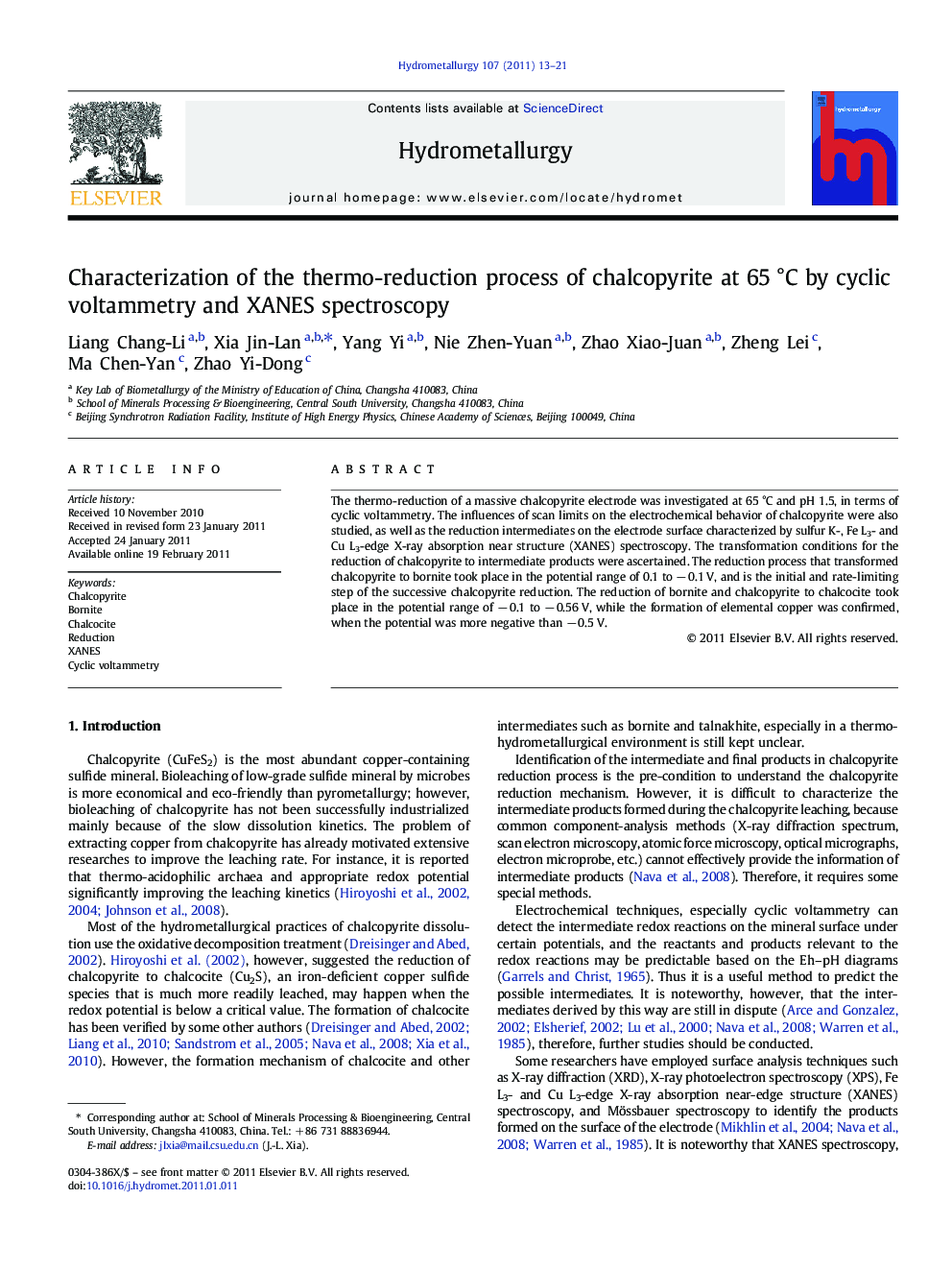| Article ID | Journal | Published Year | Pages | File Type |
|---|---|---|---|---|
| 212813 | Hydrometallurgy | 2011 | 9 Pages |
The thermo-reduction of a massive chalcopyrite electrode was investigated at 65 °C and pH 1.5, in terms of cyclic voltammetry. The influences of scan limits on the electrochemical behavior of chalcopyrite were also studied, as well as the reduction intermediates on the electrode surface characterized by sulfur K-, Fe L3- and Cu L3-edge X-ray absorption near structure (XANES) spectroscopy. The transformation conditions for the reduction of chalcopyrite to intermediate products were ascertained. The reduction process that transformed chalcopyrite to bornite took place in the potential range of 0.1 to − 0.1 V, and is the initial and rate-limiting step of the successive chalcopyrite reduction. The reduction of bornite and chalcopyrite to chalcocite took place in the potential range of − 0.1 to − 0.56 V, while the formation of elemental copper was confirmed, when the potential was more negative than − 0.5 V.
Research Highlights► Thermo-reduction products on the electrode surface were determined by CV and XANES. ► Chalcopyrite is successively reduced to bornite, chalcocite and elemental copper. ► Chalcopyrite Reduction to bornite is the initial and rate-limited step. ► Reductions of chalcopyrite and bornite to chalcocite take place in – 0.1 to – 0.56 V. ► Elemental copper formed when potential is negative than –0.5 V.
